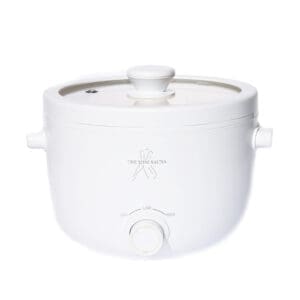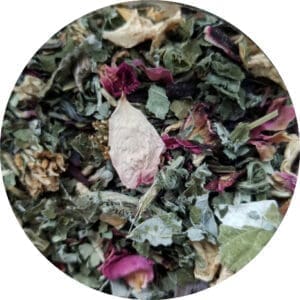Author: Keli Garza
Published: Feb 25, 2017
Recent articles circulating in the media suggest that vaginal steaming can disrupt the pH balance of the reproductive tract. Dr. Jen Gunter, a board certified OB/GYN, is one of the most vocal proponents of this argument. As an expert in vulvovaginal disorders and infectious diseases, Dr. Gunter’s medical opinion comes with a high level of authority.
On her wordpress blog, Dr. Gunter writes a post entitled Gwyneth Paltrow Says Steam Your Vagina, An OB/GYN Says Don’t (Jan 2015), in which she advises against the practice. Dr. Gunter explains how sensitive the upper and lower reproductive tracts can be and says that there should be caution when messing with the ecosystem. Specifically, Dr. Gunter mentions that the lactobacilli strains “that keep vaginas healthy are very finicky about their environment and raising the temperature with steam…is likely not beneficial and is potentially harmful.”
General Physician Dr. Ann Robinson further explains in Sorry, Gwyneth Paltrow, but steaming your vagina is a bad idea (Jan 2015) that the vagina is kept at a perfect body temperature. “Any hotter and unwanted bacteria and yeasts such as candida will proliferate,” states Dr. Robinson. She further states that women who engage in vaginal steaming would “definitely” be at higher risk of thrush.
Dr. Gunter and Dr. Robinson are in agreement: introducing heat to the reproductive organs can disrupt good bacteria, allowing unwanted bacteria and yeasts to thrive. Considering the widespread use of vaginal steaming in traditional medicine, this information raises considerable concern.
What also raises concern, however, is that Dr. Gunter also admits, “we don’t know the effect of steam on the lower reproductive tract.” In my research, I have not discovered any clinical trials on the practice of vaginal steaming, and it appears that Dr. Gunter has not either. The absence of clinical studies on the topic equates to a measure of uncertainty. In situations where empirical data is lacking, doctors form their opinions by guessing what they think might happen.
Though such opinions hold a degree of merit, any doctor who gives an opinion while lacking substantial evidence to support the opinion is simply guessing. According to the scientific method, such opinions are referred to as hypotheses.
In this instance, the hypothesis formed by Dr. Gunter and Dr. Robinson is that practicing a vaginal steam will disturb the ecosystem of the vagina resulting in infection. For the hypothesis to stand as true, we must find case studies where users contracted infections as a direct result of performing vaginal steams. If we find the opposite–that users do not contract infections after steaming– the hypothesis is disproved.
Though no formal studies exist, I have provided below a few case studies with which to test the Gunter-Robinson hypothesis.
Case Study A
Since 2011, I have done approximately 108 vaginal steam sessions. Despite the frequency of vaginal steaming, I have never had one yeast, bacterial or viral infection.
My case does not support the Gunter-Robinson hypothesis as true. It disproves it.
Case Study B
A 38-year-old woman with a history of yeast overgrowth implemented monthly vaginal steams into her self-care routine in 2014. She reports that her yeast infections have decreased in frequency and severity since starting the practice of steaming. She further reports that she only gets infections now if she fails to do her monthly steam sessions. If she feels an infection starting she performs a vaginal steam as soon as possible and says that often makes it go away.
This case does not support the Gunter-Robinson hypothesis as true. It disproves it.
Case Study C
A 37-year-old woman’s husband gifted her a vaginal steam sauna on her birthday. She wanted the gift to alleviate painful menstrual cramps. The woman had documented cases of bacterial vaginosis (BV) and human papillomavirus (HPV) that dated back ten years. Six months after beginning the practice of steaming, she had her annual Pap smear. She describes the experience below:
“I’m so excited I don’t know where to start…I went to my annual well woman (annual because HPV, for many years). A different doctor tended to me, she was very young just finishing up her 3 year residency at this particular facility. She asks how my periods are and I tell her what they used to be like; heavy, clotty, painful and long. Then I tell her I started steaming in December and they are now nearly painless, medium flow for 4 days. I explain the steaming box, pot, herbs, frequency etc. Then mention my BV troubles are also gone and I haven’t had to use the boric acid vaginal suppositories since December either. She is intrigued and says, they don’t teach us about that in med school, I’m going to have to look into it.
She proceeds with my pap [sic] and tells me I can dress and that a nurse will be in shortly to speak to me about after care. I dress and I’m waiting and waiting. Instead of the nurse coming in, the doctor returns and brings an older woman doctor with her. She wants to know more, so I tell her everything again. She’s taking notes. I pull up steamy chick on IG and mention the website.
Here’s to hoping my experience and results can help other women experience self-care healing like I have! And opening the eyes of western doctors to natural alternatives.”
A week later her Pap smear returned normal for the first time in her life. That means that her HPV also cleared up since she began the practice of steaming.
This case does not support the Gunter-Robinson hypothesis as true. It disproves it.
Though I am not a medical doctor like Dr. Gunter and Dr. Robinson, I have documented approximately six hundred case studies of women who vaginal steam, noting such variables as the steam equipment, duration of treatment, menstrual cycle day, frequency, herbs and results. As I have not found any other researchers documenting similar information, I assume this database is the only of its kind.
A review of data from vaginal steam users who did not report infections before the start of treatment reveals that zero users reported infections after beginning steam sessions. Of the vaginal steam users who reported infections before starting the treatment, the vast majority reported that their infections either discontinued entirely, or reduced significantly in frequency and severity. There are only four known cases where the user reported an infection post-steam: 2 were herpes outbreaks and the other two were yeast infections. Four cases out of 600 equates to less than one percent chance that a user will have an infection after a vaginal steam session.
This evidence not only disproves the Gunter-Robinson hypothesis, it suggests that the exact opposite might be true–vaginal steaming appears to reduce incidence of infection likely improving the pH balance of the reproductive tract.
Hopefully, the experts will tackle that hypothesis with a clinical study, because guessing isn’t science.
About the Author
Keli Garza has a Masters degree in International Development graduating cum laude. She is the founder of the Peristeam Hydrotherapy Institute and owner of Steamy Chick.

































